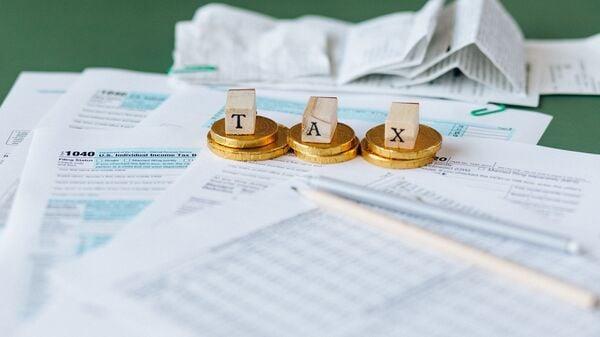
CBDT Revises Tax Appeal Limits To ₹60 Lakh, ₹2 Crore, ₹5 Crore To Streamline Disputes, Reduce Litigation
As per a circular by the CBDT , tax authorities can file appeals before the ITAT, high courts and Supreme Court, if the disputed tax demand exceeds ₹60 lakh, ₹2 crore and ₹5 crore, respectively.
In 2019, the government had set the threshold for filing appeals at Income Tax Appellate Tribunal (ITAT) at ₹50 crore, high courts ( ₹1 crore) and Supreme Court ( ₹2 crore).
The Central Board of Direct Taxes (CBDT) also said that monetary limit with regard to filing appeals/SLP (Special Leave Petition) shall be applicable to all cases including those relating to TDS/TCS.
Also Read | What is NPS Vatsalya? All you need to know of new pension plan launching todayIt further said that SLPs/appeals pending before Supreme Court, high courts, and tribunals that are below the prescribed threshold should be withdrawn.
"As a step towards management of litigation, it has been decided by the Board to revise the monetary limits for filing of appeals in income tax cases...," the CBDT said.
It also said that an appeal should not be filed merely because the tax effect in a case exceeds prescribed the monetary limits and instead should be decided on merit of the case.
"The officers concerned shall keep in mind the overall objective of reducing unnecessary litigation and providing certainty to taxpayers on their income tax assessments while taking a decision regarding filing an appeal," the CBDT circular said.
Also Read | US Fed Meeting: See date, timing, and schedule details hereFinance Minister Nirmala Sitharaman in her Budget speech on July 23 had announced an increase in the monetary limits for filing appeals related to direct taxes, excise and service tax in tax tribunals, high courts and Supreme Court to ₹60 lakh, ₹2 crore and ₹5 crore, respectively.
Moore Singhi Executive Director Rajat Mohan said for taxpayers , these higher limits reduce the likelihood of prolonged litigation, promoting quicker resolutions at earlier stages.
"While these changes are a welcome shift, the true impact will depend on how judiciously the tax authorities exercise their discretion in deciding which cases to escalate. This policy could lead to a more balanced and efficient litigation environment, where both sides can avoid unnecessary delays and focus on significant legal issues," Mohan added.
Nangia Andersen LLP Partner Sandeep Jhunjhunwala said this revision in monetary limit is expected to significantly ease the burden on judicial bodies, allowing for more efficient adjudication of larger tax disputes .
"By formalizing the increase in monetary limits for filing appeals, the government signals its intent to adopt a more pragmatic approach to tax litigation," Jhunjhunwala added.
Also Read | Radhika Gupta bats for SIPs again, 'would love to hear young people say...'He further said this circular continues to maintain the exceptions outlined in previous CBDT circulars, allowing the Revenue department to pursue appeals in cases that fall below the revised monetary thresholds, which notably include cases involving TDS /TCS, undisclosed foreign income or assets, tax evasion, and instances where courts have issued specific directions.
The CBDT had in March issued a circular permitting income tax authorities to file appeals irrespective of monetary threshold in cases relating to TDS/TCS, undisclosed foreign income, or information received from investigating agencies like ED and GST Intelligence.
The circular said that the prescribed monetary limits will not be applicable for filing appeals in cases where prosecution has been filed by the department in the relevant case, and trial is pending and conviction order has been passed and the same has not been compounded.
Around 2.7 crore direct tax demands totalling about ₹35 lakh crore are being disputed at various legal foras.
Disclaimer: This story has been published from a wire agency feed without modifications to the text. Only the headline has been changed. Legal Disclaimer:
MENAFN provides the
information “as is” without warranty of any kind. We do not accept
any responsibility or liability for the accuracy, content, images,
videos, licenses, completeness, legality, or reliability of the information
contained in this article. If you have any complaints or copyright
issues related to this article, kindly contact the provider above.


















Comments
No comment